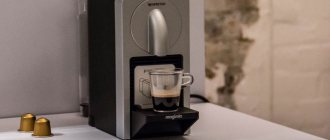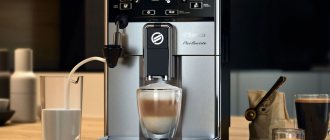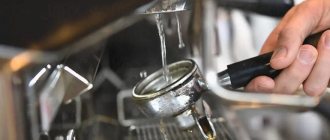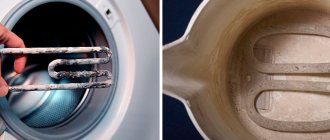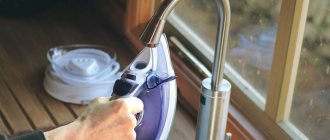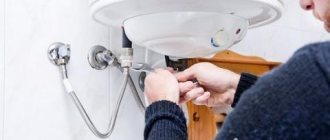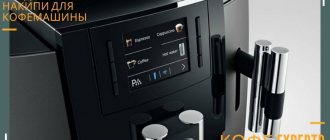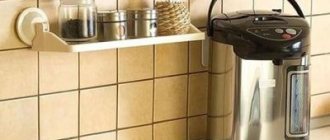The coffee machine is a rather delicate device and you need to clean it wisely, since the uninterrupted operation of such expensive equipment depends on this operation. Each user should take this fact into account and not neglect it if they want to receive a long service life and delicious coffee, free of extraneous flavors.
If you treat equipment with calm inaction, this will result in a very high probability of expensive repairs. In practice, repair more often consists of professional cleaning, and only then in replacing failed spare parts , so it is much more forward-thinking and economical to carry out cleaning on your own.
The cornerstone of any care is decalcification.
Decalcification is a process during which the internal filling of the device gets rid of scale. I will add that it is centuries-old calcium deposits that most often become the cause of failure . The operation is carried out in full accordance with the instructions of the manufacturer of your coffee machine. Initially, I advise you to look there to understand how step-by-step cleaning is performed.
Coffee machines with automatic decalcification
The fact is that there is no universal algorithm; you need to know what to put inside and what buttons to press . Some brands complicate the process by forcing the user to perform at least ten different steps. For example, when cleaning manually, it is necessary to pass the solution through the cappuccino maker in portions of 50 ml, observing pauses of 2-5 minutes. If an error occurs, you will have to restart decalcification, so extreme care is required.
I will make a reservation that premium models rarely give multi-step instructions, although there are exceptions.
However, basically cleaning is carried out in 2-3 steps:
- The cleaning agent is loaded into the tank;
- The automatic decalcification mode is activated, for which just pressing one button is enough. It is designated as Decalc, Calc, Decal. Automatic decalcification lasts 25-40 minutes. Once the operation is complete, do not add any liquids to the container until the machine says that cleaning is complete.
The best coffee machines with adjustable water hardness
After manual or automatic descaling, rinsing is always carried out .
To do this, empty all trays and water tank. Clean water is poured into it and a clean water cycle is started using 1-2 full hoppers. After rinsing, clean water is poured in and the tank filter is returned to its place. I recommend pouring the first 2-3 cups of espresso down the sink. Let me add that professional machines connected to the water supply are decalcified only after disassembling the device . In fact, the cleaning procedure is part of the maintenance.
It happens that the instructions are simply lost or it is an office device for which no one is responsible. What can I recommend here? - Internet to help. You should type the model name + “instructions” into the search engine. With a 99% probability, the system will produce the required document with the ability to view and download. Here you can learn all the details of cleaning and care. As an alternative, call a specialist service .
About choosing between a service center and an ad master
But this is not free and, frankly, with all the prevalence of the Internet, it is unreasonable.
How to descale a coffee machine - choose a decalcinator
In addition to the manufacturer's instructions, you should be careful about the choice of cleaning agent. Everything is the same here: preparations intended for decalcification work to remove scale . Coffee machine brands do not hesitate to lobby for their products, but there are no significant differences between them.
Branded powders and tablets are widely produced by the companies Krups, Philips, Saeco, Delonghi, but none of them produces them on their own, leaving this headache to OEM contractors. But almost all funds are sold at a fairly high cost, not less than 1 thousand rubles. per package.
In practice, it is permissible to use any cleaner, including a budget one . You will definitely not be disappointed in the effectiveness if you can comply with all the recommended proportions. There is no need to overpay for a brand. But, make sure that the decalcinator is intended for automatic coffee machines . You can purchase the product in a large chain store like Eldorado.
There may be several options:
- dry powder - poured into a water tank in a dissolved state. Pour the liquid until it reaches the maximum mark of the tank. Each manufacturer recommends using certain proportions, which is easy to read on the packaging;
- tablets are essentially the same powder that has been given the appearance. The active substances are pressed into a fancy shape and dissolve in water in the same way. Dissolution must be complete;
- liquid decalcifiers;
- cleaning capsules – for capsule coffee machines.
Any of the indicated products is diluted in water. The total amount of liquid is taken to be 1-2 liters or more. Before use, remove the cleaning filter from the tank, if there is one . Otherwise, if the solution passes through it, it will be irrevocably damaged.
Among the brands you can note Bosch tablets - you will pay about 750 rubles. for a package of three briquettes, dry and liquid Melitta cleaners, they can be called budget, Philips Saeco products - from 800 rubles / 250 ml of liquid decalcifier. One of the most expensive are Krups powders (the average price for a package of two bags is 800 rubles). Feel free to turn to less expensive options.
What to do with folk recipes
The Internet is full of recipes where it is recommended to use Coca-Cola, vinegar, and citric acid to descale. We immediately discard the drink and essence - the equipment will fail “at once”. Citric acid can be used at a stretch, I would say, in desperate situations, by diluting the powder 10 g in a liter of water. Next, the mixture is poured into the water tank and the instructions are followed.
However, no matter how you look at it, the cleaning will not be complete. All home methods are inferior to professional ones in terms of effectiveness. There are also pitfalls - citric acid has an aggressive chemical effect, and it will gradually corrode rubber seals and aluminum parts if you decide to use this option on an ongoing basis.
As a result, I would recommend turning to professional descalers. Their cost is high compared to the same citric acid, but it is insignificant compared to the cost of repairs.
Frequency of descaling the coffee machine
Every more or less smart device will ask itself to be cleaned by displaying an indication on the screen or case. However, there are several subtle points here, since each coffee machine determines the need for decalcification differently.
The fact is that the presence of scale cannot be determined using sensors or other clever devices. The device indicates the need for cleaning only on the basis of counting the cooked portions . If the device decalcifies after 250 cups, it will give a signal after 250 cups. At the same time, visually the boiler may become overgrown with deposits or remain crystal clear.
What does this depend on? The first is the quality of the water being poured. If it is hard, the heating elements will quickly become covered with deposits, perhaps much before the machine displays the cleaning indication. The user is faced with the task of correlating the amount of water with the number of servings and the rate of scale formation.
About the necessary water treatment for a coffee machine
The water hardness programming option will help you. A special test strip is often included with the coffee machine . It is enough to add water and determine its actual hardness, after which the settings are set based on it. Thanks to this simple programming (all details are always described in the instructions for the device), the machine will begin to count the number of cups based on the set hardness of the water that flows from your tap.
Instructions for measuring water hardness:
- pour water into a glass;
- We immerse the tester in it (a couple of seconds is enough). One strip is for one test;
- wait a minute;
- check how many divisions have changed color;
- a typical decoding is as follows: 1 division - very soft water, 2 - soft, 3 - hard, 4 - very hard;
- go to the menu, find the hardness settings and select the value corresponding to the obtained one.
I would like to draw your attention to the fact that the factory settings are mainly aimed at maximum rigidity . This does not always work - if soft water flows from the tap, the machine will require decalcification more often than it needs. Conversely, there are devices with average factory settings - when the water is hard, all heating elements will suffer. That’s why it’s so important to set the correct value yourself.
If the machine issues a cleaning request, this point cannot be ignored. There are models that will automatically lock if the user has not decalcified . There are those that work for several weeks, despite the indication, but this threatens to break, despite such “tolerance”. In general, it is better to be prudent and purchase products in reserve - for a couple of cleanings.
Prevention is everything
To ensure that the need for decalcification occurs as rarely as possible, you should carefully consider the quality of the water used. The liquid must be soft and clean . Then the machine is programmed for minimal hardness and requires cleaning to be started extremely rarely.
Preventative care for your coffee machine
This is achieved in two ways:
- filtration;
- filling with bottled water. I’ll say right away that this is a more effective option, but less convenient.
Filtration can be double. The first filter is installed in the coffee machine itself. The second is either at the water tap (household purification systems using so-called reverse osmosis) or in an Aquaphor-type jug.
The best coffee makers with a permanent filter
Please note that a device with a filter installed in the tank may not require decalcification at all, since these may be the factory settings.
He just thinks the water is perfect. If you use osmotic filtration, scale will actually not form .
However, deposit removal is carried out at least once a year, even without the requirement of a coffee machine. What to do if the water filter fails
How to choose a cleaning product
It is best to buy a special cleaner for a specific brand of device. Such branded products are produced for coffee machines Saeco, DeLonghi, Bosch, Krups and others. They are usually not cheap, but they give the best results. In principle, these cleaners are quite interchangeable, so you can choose and buy the cheapest option.
You can also use universal cleaning products for coffee machines.
For decalcification, i.e. removing scale from metal elements, use:
- cleansing tablets;
- liquid solutions;
- citric acid.
If the brewing unit in the coffee machine is clogged (cleaning the hydraulic system)
An automatic bean-based coffee machine is always equipped with a brewing unit. In capsule devices, this functionality is carried by the capsules themselves, in carob devices - by the horn. Over the course of operation, the unit becomes overgrown with coffee oils and particles of ground powder.
The type of brewing unit can be:
- non-removable (built-in);
- removable.
Cleaning of one type or another has fundamental differences. The user must remove the removable device himself, rinse it under running water, dry it and install it back . The frequency of this operation is once every 1-3 weeks, depending on the intensity of use. For example, if the machine is in the office and dispenses about 50-100 cups every day, it is better to wash the teapot at the end of the working day.
In addition, for every 300-500 cups, a kind of spring cleaning is carried out . The removable block and water path are cleaned using special products. Manufacturers have tried to ensure that there are plenty of cleaning tablets.
If we talk about built-in brewing devices, of which there are plenty in Krups and Jura coffee machines, the machine itself sends a request for cleaning. In this case, the same tablets are used. I note that for such blocks this operation is vital; if this is neglected, the equipment will quickly turn into trash.
Choosing cleaning tablets
Almost all tablets for cleaning brewing units are produced by coffee machine manufacturers. The companies Bosch (10 pcs/750 r) and Melita (4 pcs/380 r) have especially distinguished themselves in this regard - they are the ones who will help you save money. I would like to note that products from such giants as Krups and Jura are on sale, which are 15-20% more expensive. You will hear that each device can only use the native drug, but in reality this is not true. The composition of the tablets is almost identical and any option can be used.
How it works
Detailed instructions for cleaning the brewing unit of the device should be contained in the instructions. However, not all manufacturers consider it necessary to cover this point. It happens that there is automatic decalcification, but no removal of coffee fats . This can be seen on Delonghi, Saeco, Gaggia, Spidem slot machines.
If you are faced with just such a problem, cleaning in pour-type machines is implemented as follows:
- coffee is removed from the equipment;
- The tablet is placed in the compartment for ground coffee or 3 g of cleaning powder is taken. A spill requires 2 liters of water;
- the “ground coffee” preparation mode is activated (the names may be different, but the meaning is the same);
- A cup is placed under the dispensing spout;
- Espresso brewing starts. In the settings you should set the largest volume of the drink;
- water flows into the cup, which should be poured into the sink;
- after completing the cooking cycle, leave the machine for 30 minutes;
- then rinse with clean water.
*Do not place the cleaning product in the coffee grinder or in the water container!
The correct cleaning sequence for espresso machines is as follows:
- A blind filter is installed in the espresso machine. 3 g of powder is added. This is about half a teaspoon;
- the portafilter is inserted into the group;
- the spill cycle starts for 10 s;
- work is interrupted for 10 s;
- this sequence is repeated 5 times;
- the portafilter is removed and washed;
- inserted back, 4-5 cycles of spilling without cleaning powder are passed;
- the first portion of espresso is drained;
- the metal parts of the portafilter and filters are soaked in a solution of cleaning powder (1 l/6 g);
- the parts are washed with warm running water and installed in place.
The entire process of removing coffee fats takes 10-15 minutes . If the coffee machine has automatic cleaning - CLEAN - in different models it is started with different buttons, which should be looked at in the instruction manual. There is also a special compartment for cleaning products. When the automatic program is running, you should monitor the cleaning process, the indication shown by the device, follow commands - add water, press a button, empty containers, etc.
*you can additionally remove the coffee supply device (dispenser) and wash it manually. If non-native tablets are used and they do not fit into the compartment, they should be crushed.
Additional nuances
Not all equipment can work with both beans and ground coffee (there are models that do not have a compartment for ready-made coffee powder). Plus, some manufacturers equip these bins with sensors, so if there is no product inside the coffee machine, they refuse to prepare a drink. All this makes cleaning the brewer more difficult.
In this case, you should periodically wash the block under running water, dry it and install it in place. The coffee oil tablet is placed in the brewer, the machine is turned on and cleaning begins . After this, forced flushing of the coffee tract is required, which is started by a button or a separate item in the menu. There may be part of the tablet left in the waste compartment that has not had time to dissolve.
Repair of Bosch Benvenuto Classic coffee machines. Price of work
If there is something wrong with your coffee machine, it has stopped making delicious coffee or it needs repair, you can call us or submit a repair request directly from our website.
We also conclude service agreements to ensure that your coffee machine is always in good condition.
Service contract (download, view)
Review of the Bosch TCA 5309 Benvenuto Classic coffee machine: features and photos.
A person who loves high-quality coffee realizes that the instant product is in most cases unnatural. If you use ground beans in production, which can even be brewed in cups, then the quality of the resulting product changes slightly for the better, but you can really get excellent results only by using a coffee machine. Often, even using such a device, it is difficult to prepare truly high-quality coffee. The machine can make the drink taste very pleasant.
Now the question is which device to choose. There are a huge number of devices on the market that suit different tastes and price requirements. The main thing is to choose the right car. You shouldn’t be guided by the motto: “The cheaper, the better.” If we are talking about coffee, then there is no need to save. The Bosch TCA 5309 Benvenuto Classic coffee machine can now be called a rather exciting option. We’ll talk about it specifically further.
How to tidy up the milk circuit of a coffee machine
This topic is especially relevant for owners of coffee machines with automatic cappuccino makers. By the way, any device needs to be cleaned, both with a discharge pipe and a built-in jug. Here, timeliness of actions and reliance on instructions are also important.
As a rule, manufacturers indicate the need for periodic maintenance. In fact, cappuccino makers and milk jugs must be cleaned selectively and always on a regular basis . Washing is carried out under running water without the use of chemicals. If the machine has a cappuccino maker in the form of a tube, it is immediately cleaned under the tap and put back.
The automatic cappuccino maker can be cleaned as follows: replace the milk container with a water container. The milk supply is activated. If cleaning is carried out quickly (the system is not contaminated with dried residues), it is enough to drive 50 ml of water.
If you skipped washing and the milk tract is clogged and does not create foam well, you will have to use a special preparation . Here again, manufacturers help out by offering a lot of products with a significant price range. But the situation remains the same - in an automatic coffee machine you can use any product designed to clean the milk system. The minimum price tag starts from 320 rubles for 250 ml (again, Melitta dumps).
I advise you to wash all parts of automatic cappuccino makers in the dishwasher or under the tap at the end of 3-4 days of operation . This way, this unit will never need chemicals and you can save on cleaning. Don't forget to do a quick steam rinse after each cappuccino.
If you are too lazy to deal with this issue, immediately purchase full automation, where the cleaning cycle of each unit is started with one button.
What can be used to clean the milk system
During intensive use, a number of specialized drugs are used:
- Liquids for cleaning the milk system - effectively remove milk residues. Used in accordance with the equipment manufacturer's instructions. As a rule, 15-25 ml are used daily;
- liquids for cleaning cappuccino makers;
- tablets for cleaning the milk system.
Types of contamination of coffee machines
The coffee machine, despite its cost and the presence of many useful functions, needs regular cleaning. Common types of dirt: dried milk residues, scale, coffee oils.
Coffee oils
These are the remains of oils that coffee beans are rich in. A thin dark film on the holder, upper strainer and walls quickly spoils the taste of coffee and makes it rancid. The aroma becomes unpleasant.
Scale
Most coffee machines break down due to this problem. This misfortune affects not only the simplest devices, but also modern expensive coffee machines. The taste of the drink in the presence of scale becomes unpleasant.
What else needs to be done
Firstly, a simple wipe of the case from dirt and dust won’t hurt. You cannot ignore such a detail as the water collection pan - periodic drainage of the liquid is required . Otherwise, a hint of mold and a musty smell may appear. By the way, once a month you can wash this thing in the dishwasher using a temperature no higher than 60 degrees. The tray should be thoroughly cleaned before reinstallation.
Cleaning the pulp compartment
The second unit that everyone forgets about is a container for collecting waste cake . Waste should be taken out strictly with the coffee machine turned on. This way all the meters will react correctly and the device will work in its own way. Otherwise, the signal for cleaning will come when the pulp no longer fits into the compartment. This causes jamming and contamination of the infuser and internal filling.
Cleaning the coffee grinder
The quality of espresso in a cup depends not only on the cleanliness of the entire coffee-milk tract and the brewer. The condition of the coffee grinder plays a significant role. After grinding, particles of ground powder settle between the teeth of the millstones. The deposits consist of oils and fats; under the influence of high temperatures they stick together, significantly distorting the taste of the drink, forming mold.
The best coffee machines with bean grinding settings
Millstone cleaning is carried out using two products - special powder or tablets . Powder is a finely crystalline substance based on food starch. The bottom line is that it is able to effectively absorb fats and oils. Cleaning frequency: every 3-4 kg of coffee .
All types of millstones are cleaned according to the same principle:
- the bean hopper is cleared of coffee;
- activate the grinding to completely remove the remaining grains;
- a bag of powder or tablet is added to the hopper. The composition must pass through the millstones;
- turn on the grinding for 5-6 s;
- the container is filled with grains;
- Pour the first 2-3 servings of the finished drink into the sink.
Another important point is regular lubrication of the moving parts of the removable infuser. Every device needs this. Average frequency: every 500 cups . What and how to lubricate is described in detail in the instructions for each specific model (seals, cuffs, etc.).
Particularly generous brands include a tube with a special product in the kit. These are silicone lubricants with the first food grade approval (NSF H1). They can be purchased at any large electrical goods store. If you neglect maintenance, the teapot will jam and possibly fail altogether.
The appearance of scale during operation
The condition of such devices is significantly influenced by the quality of tap water. The main cause of problems with limestone is increased hardness or excessive mineral and salt content.
Why and how scale appears
The process of scale formation is the result of boiling hard water. During heat treatment, the liquid evaporates, and salts and minerals settle:
- on the walls of the container;
- heating elements;
- inside water canals.
As a result, a white or yellow coating forms, which spoils the taste of the drink and can be harmful to health and can damage the device.
How to Determine When Cleaning is Needed
To determine when to clean the device, it is not necessary to open the container and visually look for signs of plaque. A sure sign of stone formation is the appearance of a characteristic sediment in the cup. Many Bosch models are equipped with a special scale sensor. When it lights up red, you must immediately clean the device using the methods provided in the instructions.
conclusions
If you follow the recommendations for servicing all components, breakdown of the coffee equipment is unlikely. If you neglect simple principles, you can end up with expensive repairs. Given the low availability of some parts, this prospect is not at all attractive.
If we summarize all the information, we can say the following:
- A coffee machine is a smart device that asks itself to be cleaned. The user does not need to independently monitor this moment. The main thing is to take clean water and set its hardness in the settings. If the device operates on filtered water, the lowest degree of hardness is set and decalcification will be required once a year. Powerful osmotic filters completely eliminate the need for cleaning; then decalcification is carried out with simple clean water, and you can safely refuse to install a filter in the tank of the machine. Ultimately, this approach will be much cheaper than regular decalcification for every 50 liters of waste water;
- Cleaning of scale, coffee oils, fats, and washing of the cappuccino maker is carried out in strict accordance with the instructions. Each car has its own subtleties, I advise you not to neglect this point;
- The choice of cleaning products is entirely up to you. You can take anything, including something quite budget-friendly and not native;
- traditional methods are in the firebox. You break your equipment and go broke on repairs;
- do not delay cleaning if the machine has already shown an indication. The process will take 15-20 minutes.
All budget products for decalcification, cleaning teapots, cappuccino makers can be found at the Melitta brand.
Summarize
The coffee machine itself will let you know when it is time to start cleaning. You just need to monitor the water hardness. If the machine gives a signal that the device is dirty, you cannot put it off; you need to carry out the procedure on time. Timely cleaning of the device will allow you to save money and return the taste to its original shades.
In order to spend less time cleaning, you can use filtered or bottled water. If you want to rid your machine of scale, you should follow the instructions.
It is not necessary to use the cleaning products indicated in the instructions if you do not have them on hand. Citric acid may be suitable. Due to its composition, it will not have a harmful effect on the body either for you or your family. In addition, citric acid is much cheaper than advertised coffee machine cleaning products.
If you have problems with your cappuccino maker, then you cannot do without cleaning, since milk fat can adversely affect the operation of the machine.
If your machine does not form a tablet or does not form normally. Then you should look for problems and resolve the issue urgently.
Features of appearance
In principle, among its rivals, this car is not very different in its external design. But still there are some differences. For example, here you can use good sized bowls. Although this is a design feature, it has an impact on the design. The body received strict stripes, also a traditional color scheme. That’s why the car will fit into any interior. This device is standard and universal. He can brew really high quality drinks. This is the described Bosch TCA 5309 coffee machine. The capabilities of this device amaze many.
Multifunctional Features
This coffee machine has a mechanical cappuccino maker. This is a tube through which compressed air is transmitted throughout the structure. It allows you to make foam from milk so that you can later add it to your cappuccino. In addition, the machine can provide just ordinary boiling water. This functionality is considered obvious for modern coffee machines, so there is nothing unusual in the above properties. In general, consumers note that the Bosch TCA 5309 Benvenuto Classic will be comfortable for use at home and in offices.
Appearance and design
We'll look at how to use the device later. It is recommended to immediately talk about the appearance of the device. The rather massive dimensions of this device may initially repel the buyer. But, if you take a closer look at the functionality, this device has received impressive functions. There is a coffee reservoir at the back. In general, the appearance of the device is decent. The case is made of plastic, but it is of such high quality that it is quite difficult to scratch it. Even though it is glossy, the performance is excellent. It is recommended to highlight pallets, certain mechanisms, etc. among the iron parts. There are silver buttons on the front surface. They allow you to control this device. Therefore, in terms of design solutions, the Bosch TCA 5309 coffee machine is completely good.
